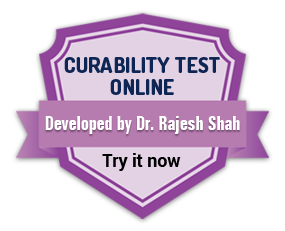With various medical branches, the debate continues about which treatment is most effective for vitiligo: homeopathy, Ayurveda, or allopathy.
1) Allopathic treatment and medicines provide quick-acting formulas that address symptoms.
2) Homeopathy focuses on long-term treatment that targets the root cause.
3) Ayurveda treats vitiligo by balancing the body’s doshas (energies).
The white patches on your skin may unintentionally lower your confidence. This problem is common in people with vitiligo. Even with multiple treatments, the possibility of not curing or treating the core cause of this disorder persists.
With so many debates, it’s still not easy to decide – Homeopathy vs Allopathy vs Ayurveda: Which Is Better for Treating Vitiligo?
Below, we examine the treatments and differences to help you understand the perspectives of allopathic, homeopathic, and Ayurvedic treatments.
A) Homeopathy Treatment for Vitiligo
Homeopathy treatments follow the principle of “like cures like.” Instead of treating symptoms directly, this approach supports the body’s natural ability to heal itself. The idea is that symptoms indicate the body is working to restore balance and health.
Homeopathy treatment for vitiligo is all about adjusting the medicines according to the symptoms and traits that each patient experiences. Typically, doctors will ask about mental, emotional, and physical symptoms related to the disorder. This allows doctors to personalize vitiligo treatment according to each individual’s needs.
Benefits and Limitations of Homeopathy Treatment for Vitiligo
- Limited side effects: While most believe homeopathic treatments have no side effects, they do, but they are minimal to nil as compared to conventional medicines.
- Noticeable changes over time: The Long-term use of homeopathic medicines for vitiligo helps patients experience noticeable improvements, especially when lifestyle changes are made alongside the treatment.
- Natural remedies: Homeopathy uses natural substances in small doses, making it a more natural treatment option.
- Personalization: As mentioned, medicines are prescribed based on the patient’s history and condition, allowing for better outcomes.
B) Allopathic Treatment for Vitiligo
Allopathy, or conventional medicine, is a well-researched and evidence-based treatment for vitiligo. These treatments primarily focus on controlling the immune system’s attack on pigment-producing cells and restoring skin color. While allopathy includes topical creams, surgeries, and other options, the results may be temporary, and progress can sometimes be reversed.
Benefits and Limitations of Allopathic Medicines
- Speed of results: With multiple trials and tests, allopathic medicines are designed to show rapid improvements. In vitiligo, noticeable improvements may occur soon after treatment begins.
- Evidence-based: Allopathic remedies are backed by ample research papers and evidence, making them a trusted choice for many.
- Side effects: Allopathic medicines can have side effects, ranging from mild irritation to long-term impacts on the skin, such as those caused by treatments like phototherapy.
C) Ayurvedic (herbal) Treatment for Vitiligo Some
- Ayurvedic physicians recommend raktamoksha (therapeutic bloodletting) for certain chronic skin conditions.
- Such as vitiligo, either by topical application of leeches to affected areas or by using a syringe or surgical knife to remove blood from the affected skin patches, as part of the therapy.
- This method is used to remove excess pitta dosha in the rakta dhatu (blood tissue).
- Ayurveda is a Sanskrit term meaning ‘science of life’. Ayurveda perceives life as the union of body, mind, senses, and soul. ‘Charaka Samhita’, a 2000-year-old Indian Ayurvedic text, describes vitiligo as ‘Svitra’ or ‘Kilasa’, with recommendations for vitiligo treatment.
- Ayurvedic Medicines for Vitiligo: Arogya Vardhini, Trivanga Bhasma, Mahamanjishthadi Qadha (decoction) & Khadirarishta are the most commonly used traditional Ayurvedic medicines for vitiligo treatment.
Herbal medicines beneficial for vitiligo: Manjishtha (Rubia cordifolia), Saariva (Hemidesmus indicus), Triphala (Three fruits), Haridra (Curcuma longa), Daruharidra (Berberis aristata), Khadir (Acacia catechu), Vidanga (Embelia ribes), and Bavachi (Psoralia corylifolia) provide an effective vitiligo treatment.
Comparative Analysis: Homeopathy vs. Allopathy vs. Ayurvedic for Vitiligo
- Approach to Healing: Homeopathy aims to stimulate the body’s natural healing processes. Allopathy focuses on controlling the immune response. Ayurveda aims to restore balance to the doshas through herbal remedies, detoxification, and dietary adjustments.
- Treatment Duration & Results: Regarding treatment duration and results, homeopathy works gradually for lasting change. In contrast, allopathy shows faster but sometimes temporary results, while Ayurveda requires consistent effort over time.
- Nature of Medicines: As for the nature of medicines, homeopathy utilizes diluted natural substances, whereas allopathy relies on chemical drugs and procedures. Meanwhile, Ayurveda employs herbal and mineral formulations.
- Personalization & Holistic Focus: When it comes to personalization and holistic focus, homeopathy tailors care to each patient, while allopathy follows standardized protocols. Additionally, Ayurveda combines herbs, diet, and lifestyle for holistic healing.
- Treatment Speed: Allopathy offers quicker and more direct intervention, while homeopathy is a slower, holistic approach with long-term benefits.
- Side Effects: Homeopathic treatments for vitiligo are generally safer and free from major side effects compared to allopathic remedies.
- Evidence: Allopathic medicines are always supported by scientific evidence. Although fewer studies support homeopathy, the natural ingredients used in homeopathy are believed to be effective in treating specific disorders.
Which Is Better?
There’s no one-size-fits-all answer to whether homeopathy, allopathy, or ayurveda is better for treating vitiligo. The choice depends on individual preferences, the severity of the condition, and whether scientific backing or holistic care is more important to you.
For those seeking fast and reliable results, allopathy may be a more suitable option. However, if you prefer a natural, less invasive approach and are willing to be patient with long-term treatment, homeopathy or Ayurveda may be worth considering.
Conclusion
Vitiligo can be challenging to manage, but both allopathy and homeopathy provide viable treatment options. While allopathic treatments may take a toll on your health, homeopathic treatments help you deal with ailments without major complications. Before choosing between allopathy and homeopathy, consult professionals who are experts in these fields.
While allopathic treatments are widely available, homeopathic treatments are offered at select hospitals or centers with long-standing practices. Life Force Homeopathy, Asia’s largest homeopathy clinic with 40+ years of experience, can help treat chronic disorders and ensure you’re provided with a core solution to improve your quality of life. With a global presence, Life Force offers its services in Mumbai at Chembur, Mulund, Borivali, Vashi, Santacruz, Thane, and Cumballa Hill. To date, we have successfully treated over 7,000 cases, with improvements often seen within 4–8 weeks. While treatment durations may vary, our focus remains on enhancing well-being through homeopathy for individuals who have been seeking solutions to their health conditions for years.
Written by Dr. Rajesh Shah, M.D. (Homeopathy)
Medically Reviewed by Dr. Rupal Shah, M.D. (Homeopathy)
Updated on Oct 06, 2025




